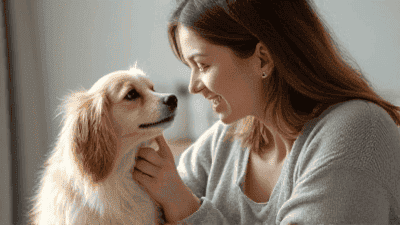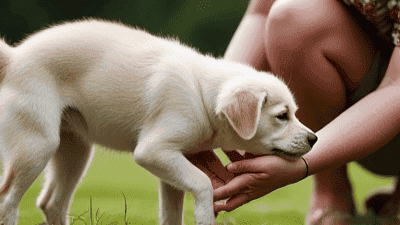
Pet ownership is a deeply rewarding experience, but it also comes with its fair share of challenges. From teaching basic commands to managing behavioral issues, training is an essential part of raising a well-adjusted and happy pet. While some pet owners opt for at-home training, enrolling in professional pet training classes offers a host of benefits that go beyond obedience.
Training helps pets understand boundaries and expectations, reducing the likelihood of behavioral problems like aggression, excessive barking, or destructive habits.
Basic commands like "sit," "stay," and "come" can prevent dangerous situations, such as running into traffic or approaching an aggressive animal.
Training teaches pets to understand your cues and commands, making it easier to communicate with them in everyday situations.
Well-trained pets are more confident, less stressed, and better equipped to handle new experiences, from vet visits to traveling.

Pet training classes are organized sessions led by professional trainers. They provide a structured environment where pets can learn new skills and behaviors.
Classes are available in group settings or private sessions, depending on your pet’s needs and your preferences. Group classes offer socialization opportunities, while private classes focus on individual attention.
Training classes cover a wide range of topics, including:
Training classes provide opportunities for positive interactions, helping you and your pet build a stronger connection. Working together to achieve goals fosters trust and mutual understanding.
Group classes expose pets to new people, animals, and environments, helping them become more comfortable and confident in different situations.
Trainers have the expertise to address specific behavioral issues and tailor training methods to your pet’s unique needs. They can also provide valuable advice for ongoing training at home.
Consistent training in a structured setting helps pets learn commands more effectively, reducing frustration for both you and your pet.
Training challenges your pet’s mind, keeping them engaged and preventing boredom, which can lead to destructive behaviors.
Pets who master new skills in a supportive environment become more self-assured and adaptable.

Training classes emphasize positive reinforcement, rewarding pets for good behavior with treats, praise, or affection. This creates a positive association with training and strengthens the bond between you and your pet.
Trainers help you learn how to communicate effectively with your pet, using consistent cues and body language. Clear communication builds trust and reduces misunderstandings.
Working together to achieve training goals creates a sense of teamwork and shared accomplishment, deepening your relationship.
Trainers can help you identify and address sources of fear or anxiety in your pet, building their confidence and trust in you as their caregiver.
Most classes start with basic commands like "sit," "stay," "come," and "heel." These foundational skills are essential for good behavior and safety.
Trainers address common behavioral issues, such as jumping, pulling on the leash, or excessive barking, teaching you how to manage these behaviors effectively.
Trainers provide strategies for dealing with challenges that arise during training, such as distractions or lack of motivation.
You’ll be given exercises to practice at home, reinforcing what your pet learns in class and ensuring consistency.

Look for experienced trainers with certifications from reputable organizations, such as the Certification Council for Professional Dog Trainers (CCPDT). Visit the facility to ensure it’s clean, safe, and well-equipped.
Choose a class that matches your pet’s age, skill level, and behavioral needs. For example, puppy classes focus on socialization and basic commands, while advanced classes build on existing skills.
Ensure the trainer uses positive reinforcement techniques rather than punishment-based methods, which can harm your pet’s trust and well-being.
Look for feedback from other pet owners to gauge the quality of the class and the trainer’s effectiveness.
Practice the skills learned in class regularly at home to reinforce your pet’s training.
Training takes time and effort. Be patient with your pet and celebrate small victories along the way.
Reward your pet immediately after they perform a desired behavior to create a strong association.
Training sessions should be brief and focused to prevent your pet from becoming bored or frustrated.
Ensure everyone in your household uses the same commands and techniques to avoid confusing your pet.
Max, a shy and anxious rescue dog, struggled with basic commands and was fearful of strangers. After enrolling in a group training class, he gradually gained confidence and mastered essential skills. The positive reinforcement-based approach helped him overcome his fears and build trust with his owner.
Luna, a high-energy puppy, was difficult to manage at home due to her tendency to jump and nip. Her owner enrolled her in a puppy training class, where she learned impulse control and basic obedience. The structured environment and expert guidance transformed Luna into a well-behaved and happy pet.
Training classes create opportunities for meaningful interactions, strengthening the bond between you and your pet.
The skills your pet learns in training classes provide a foundation for good behavior throughout their life.
Training reduces the risk of behavioral problems, making it easier to manage your pet in various situations.
Training improves your ability to understand and communicate with your pet, leading to a more harmonious relationship.
Pet training classes are more than just a way to teach obedience; they’re an investment in your pet’s well-being and your relationship with them. By providing structured learning, professional guidance, and opportunities for bonding, training classes help build trust, confidence, and mutual understanding. Whether you’re raising a new puppy or addressing behavioral issues in an older pet, training classes offer a supportive environment where you and your pet can grow together. So why wait? Enroll in a training class today and experience the transformative benefits for yourself.